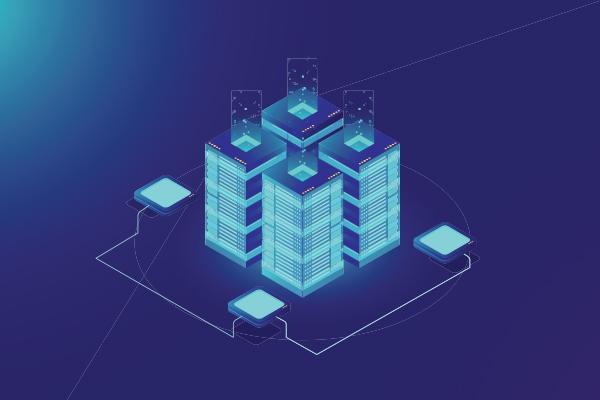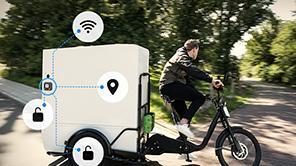How Matrix Comsec is Protecting Big Data With Southco Electronic Locking Solutions

An Interview with Jatin Desai, Marketing Manager at Matrix Comsec
From the risk of security breaches to the demands of compliance, the culture of big data is undoubtedly putting pressure on businesses and infrastructure.
This is having a significant impact on the data centre market. One company helping to address the challenges associated with this fast- changing industry is Matrix Comsec. Based in India, a country where the colocation and hosting market is set to generate almost $2billion in annual revenue by 2019, Matrix is an award-winning building security business which diversified relatively recently into the data centre market. The company is taking a more collaborative approach to helping businesses address the big data challenge. Jatin Desai, Marketing Manager at Matrix, explains more.
Can you tell us about how collaboration is essential to your approach to innovation in data centre security?
The data centre industry is currently being driven by rapid change, along with growing size and security considerations. As well as keeping up with new technologies and initiatives, for example, edge datacentres and hybrid cloud, there are also issues around compliance and data protection laws such as the recently implemented General Data Protection Regulation (GDPR). Both the opportunities for adding value and the challenges in meeting clients’ needs mean that it is more important than ever to work collaboratively with other innovators. One example of this type of partnership is our relationship with Southco which enabled us to develop a more complete data centre solution to protect data at rack level. The Matrix Access Control system allows data racks to be secured by either RFID card or biometrically, with complete records of every access attempt made – including details of access duration. This ensures that only authorised people can gain access to specific racks for a particular time period, and only by using biometric verification or another selected credential.
To achieve this more holistic level of data security, we needed to find an intelligent locking solution and audit trail capability at data cabinet level. Audit trail reporting is becoming more a common request from data customers who want to offer complete peace of mind or stay ahead of security regulations. We identified that the ideal solution would be Southco’s H3-EM Electronic Locking Swinghandle. We already had an established working relationship with Southco, which has a long track record of providing access control for security-sensitive environments such as the financial, medical and data centre industries.
Matrix has been well-established as a building security solutions provider for almost 30 years. What made you decide to diversify into the data centre market?
Companies are now looking to provide flexible, round-the-clock access to their data centres, but colocation or shared space for data centres is creating complex security risks. While working with companies on the building security side, we recognised that our customers could benefit from a more comprehensive solution that would allow them to achieve high quality data security more efficiently, more accurately and more easily. We were certain we could help them achieve that by harnessing our existing access control capability. Working in partnership with engineered access solutions provider, Southco, we developed the Matrix Access Control system which prevents unauthorised entry at multiple data centre hot spots – from perimeter to data cabinet. Our goal is to make the operational side more effective and accurate, and generally easier to use and more practical for the operator. This in turn should help the data centre operator to feel more confident that they are managing the entire process effectively and comprehensively.
How does your approach to access control benefit data centre operators and owners?
It means that data centre employees or contractors can now use just one authentication type for all security points, removing the need for multiple credentials for each of the different hot spots.
This reduces the risk of errors and breaches, and also integrates into existing security protocols, while strengthening audit trail compliance. Data is much more secure when it is protected by an electronic lock versus a simple mechanical lock. This is because the embedded intelligence in the electronic lock allows the data centre manager or customer to track cabinet access through a clear audit trail, providing comprehensive compliance reporting and security management. Southco’s H3-EM integrates seamlessly with our software and any existing security software that the particular data centre might have. Our access control system is scalable and retrofittable so it can be easily fitted onto existing racks. This makes the product a more versatile “plug and play”-type solution, which is better suited to the fast growth, build and repurposing of data centres and the changing requirements of data centre customers and regulators.
While there are many opportunities in this industry, there are also a number of challenges. How can companies successfully lock in compliance while locking out human error?
The market is evolving so fast that companies need to be sure they don’t overlook any major risk factors, especially around security. Data centre operators require solutions that are efficient and which have the capacity to help them with multiple tasks and disciplines, but they also need to identify trustworthy suppliers who can adapt quickly alongside them. The fast expansion of big data also creates risks for the companies that need to use data centres.
Tell us more about what’s involved with diversifying into the data centre market.
We are focused on problem-solving for the data centre industry. That means we are constantly analysing potential industry changes to ensure that our products address emerging as well as existing challenges. Our access control product offers flexibility, giving a more complete answer to the varied challenges that data centre operators are now facing. We try to take a more technically-driven approach to solving big data problems. This is the reason that more than 40% of our entire workforce is dedicated to the development of new products, and why we manufacture our products ourselves. We are proud that this approach has been recognised with many international awards.
What advice would you give to new entrants to the data centre market?
This is a diverse industry. Not all data centres are the same and they are changing all the time. As well as varying in size, the way they are managed can vary; for example, colocations versus customer- managed sites, and traditional data centres versus edge data centres. New entrants to this industry need to be flexible and ready to adapt to any type of data centre or, alternatively, they must be very specific about the type of data centre they are targeting. While it is essential to have a high- quality product matched with an excellent standard of service, it is also important to develop strong collaborations with other high-quality companies, like our collaboration with Southco. The challenges are certainly complex, but the rewards, for companies willing to be innovative, are many.
How do you think the future is looking for the data centre industry?
Big data and how it is managed is clearly a critical issue for businesses, now and in the future. Yet while the majority of companies are trying to be data-driven, only around half of that number say they have been successful in implementing such a strategy in doing so. More and more companies are concerned about the security of their data, and poor data can cost businesses nearly a third of their operating revenue. There are also issues around data and space demands outweighing supply. So, it is a good thing that the data centre market is growing 22% year-on-year. While it’s currently worth $25 billion, by 2022 it will be worth $80 billion. This growth has been accompanied by significant innovation, with different types of data centres and data storage concepts being developed and designed. Alongside this growth, there is still a vital need for this industry to become more innovative around security – not just systemic security or just physical security, but a good mix of both. By thinking innovatively and working collaboratively, it is possible to find new answers to long-standing issues and emerging questions. There are challenges, but there are also many opportunities to make data more accessible, more powerful and more secure. At Matrix, we are looking ahead to a future where companies no longer fear changes to data centre legislation or worry about the risk of data breaches at any level. Not only will their data be fully secure to the rack level, it will also be more versatile and more easily manageable. In our view, the company, which can ensure that its data centres are accessible by the right people but comprehensively secure at the same time, is the company which will take the lead in the future.



